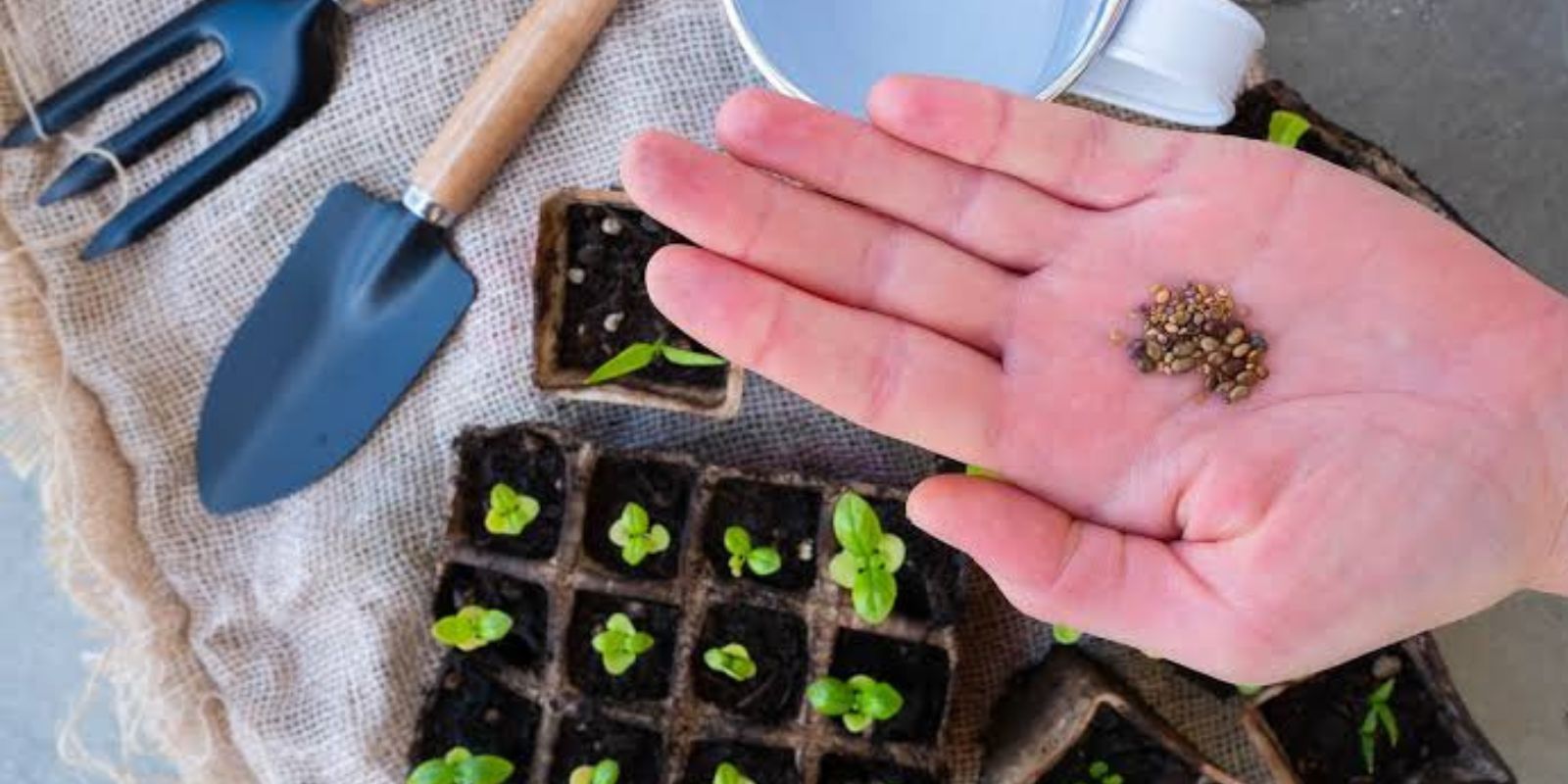As winter’s chill envelops the landscape, dedicated gardeners know that January is the perfect time to begin sowing seeds indoors. Starting seeds early not only extends the growing season but also ensures robust plants ready to thrive when transplanted outdoors in the spring. This guide highlights ten seeds ideal for January sowing, complete with cultivation tips to set you on the path to a flourishing garden.
1. Tomatoes
Why Start in January?
Tomatoes require a lengthy growing season to reach full maturity. Sowing seeds indoors in January provides the necessary head start, resulting in healthier plants and an earlier harvest.
How to Grow:
- Sowing: Plant tomato seeds about ¼ inch deep in seed-starting trays filled with a sterile, well-draining mix.
- Light: Place trays under grow lights or in a sunny window, ensuring seedlings receive 14-16 hours of light daily.
- Temperature: Maintain soil temperatures between 70-75°F (21-24°C) to promote germination.
- Transplanting: Once seedlings develop their first true leaves, transplant them into larger pots. Harden off plants before moving them outdoors after the last frost.
Recommended Varieties:
- ‘Early Girl’: Produces early-maturing, medium-sized fruits.
- ‘Brandywine’: Known for its rich flavor and large, beefsteak fruits.
2. Peppers (Sweet and Hot)
Why Start in January?
Peppers, both sweet and hot, have a long maturation period. Early indoor sowing ensures plants are well-established for a fruitful summer yield.
How to Grow:
- Sowing: Sow seeds ¼ inch deep in seed-starting mix.
- Light: Provide 12-16 hours of light daily using grow lights or a sunny windowsill.
- Temperature: Keep soil temperatures between 75-85°F (24-29°C) for optimal germination.
- Transplanting: Move seedlings to larger pots after they develop true leaves. Transplant outdoors when nighttime temperatures consistently stay above 60°F (16°C).
Recommended Varieties:
- Sweet: ‘California Wonder’
- Hot: ‘Jalapeño’
3. Eggplants
Why Start in January?
Eggplants thrive in warm conditions and need a long growing season. Starting seeds in January ensures plants are mature enough to produce abundant harvests during the summer months.
How to Grow:
- Sowing: Plant seeds ¼ inch deep in seed trays.
- Light: Ensure seedlings receive 14-16 hours of light daily.
- Temperature: Maintain soil temperatures around 80-90°F (27-32°C) for germination.
- Transplanting: After true leaves appear, transplant seedlings into larger containers. Harden off before planting outdoors when temperatures are consistently warm.
Recommended Varieties:
- ‘Black Beauty’: Classic large, dark-purple fruits.
- ‘Fairy Tale’: Produces small, tender, striped fruits.
4. Onions
Why Start in January?
Onions require a lengthy growing period to form sizable bulbs. Sowing seeds indoors in January allows for transplanting sturdy seedlings in early spring.
How to Grow:
- Sowing: Scatter seeds over seed-starting mix and cover lightly.
- Light: Provide ample light to prevent seedlings from becoming leggy.
- Temperature: Maintain soil temperatures between 65-70°F (18-21°C).
- Transplanting: When seedlings reach about 4 inches in height, transplant them outdoors, spacing them appropriately.
Recommended Varieties:
- ‘Walla Walla’: Sweet, mild flavor.
- ‘Red Burgundy’: Deep red bulbs with a crisp texture.
5. Broccoli
Why Start in January?
Broccoli thrives in cooler temperatures and benefits from an early start, allowing for a spring harvest before the onset of summer heat.
How to Grow:
- Sowing: Sow seeds ¼ inch deep in seed trays.
- Light: Ensure seedlings receive 12-14 hours of light daily.
- Temperature: Maintain soil temperatures around 70°F (21°C) for germination.
- Transplanting: Transplant seedlings outdoors 4-6 weeks before the last expected frost date.
Recommended Varieties:
- ‘Calabrese’: Produces large, central heads with numerous side shoots.
- ‘Waltham 29’: Known for its cold tolerance and prolific side shoots.
6. Cauliflower
Why Start in January?
Similar to broccoli, cauliflower prefers cool weather and benefits from an early indoor start to ensure a timely harvest.
How to Grow:
- Sowing: Plant seeds ¼ inch deep in seed-starting trays.
- Light: Provide 12-14 hours of light daily.
- Temperature: Keep soil temperatures between 70-75°F (21-24°C).
- Transplanting: Move seedlings outdoors 4-6 weeks before the last frost, ensuring they are hardened off.
Recommended Varieties:
- ‘Snowball’: Produces compact, white heads.
- ‘Cheddar’: Features orange curds rich in beta-carotene.

